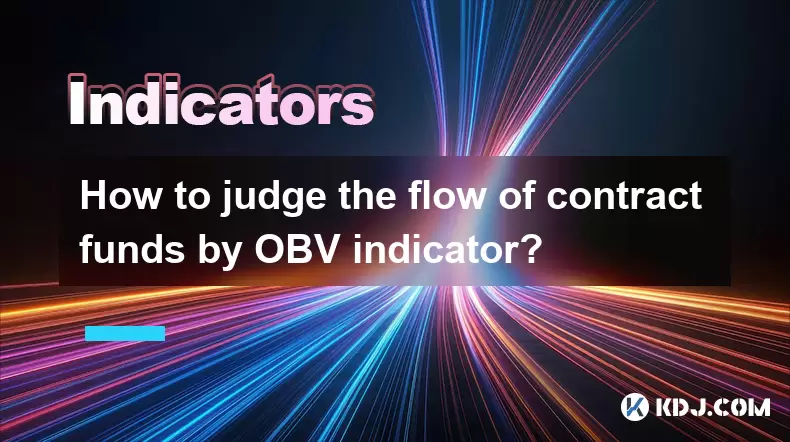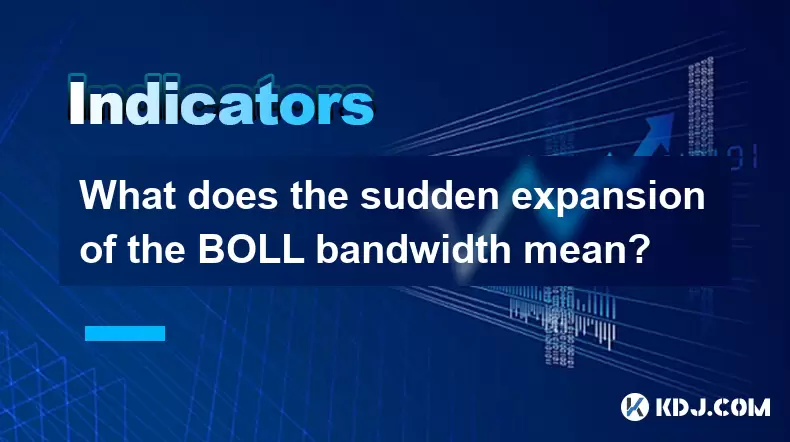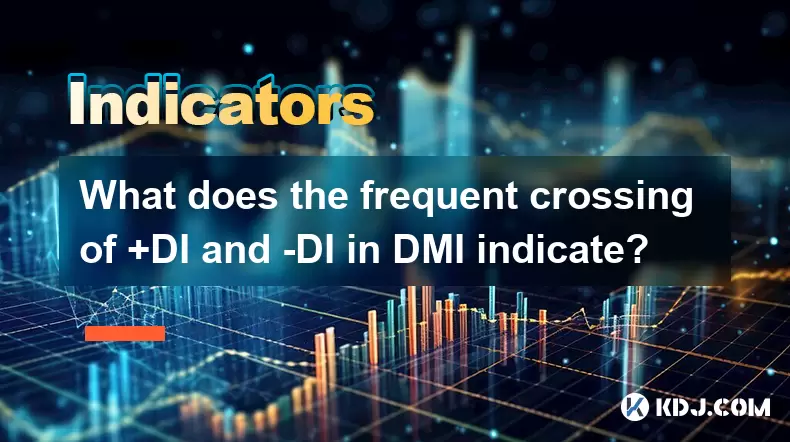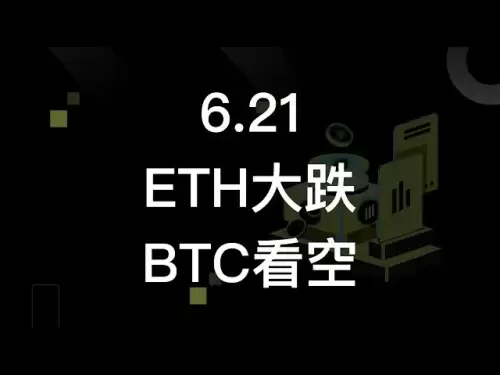-
 Bitcoin
Bitcoin $106,754.6083
1.33% -
 Ethereum
Ethereum $2,625.8249
3.80% -
 Tether USDt
Tether USDt $1.0001
-0.03% -
 XRP
XRP $2.1891
1.67% -
 BNB
BNB $654.5220
0.66% -
 Solana
Solana $156.9428
7.28% -
 USDC
USDC $0.9998
0.00% -
 Dogecoin
Dogecoin $0.1780
1.14% -
 TRON
TRON $0.2706
-0.16% -
 Cardano
Cardano $0.6470
2.77% -
 Hyperliquid
Hyperliquid $44.6467
10.24% -
 Sui
Sui $3.1128
3.86% -
 Bitcoin Cash
Bitcoin Cash $455.7646
3.00% -
 Chainlink
Chainlink $13.6858
4.08% -
 UNUS SED LEO
UNUS SED LEO $9.2682
0.21% -
 Avalanche
Avalanche $19.7433
3.79% -
 Stellar
Stellar $0.2616
1.64% -
 Toncoin
Toncoin $3.0222
2.19% -
 Shiba Inu
Shiba Inu $0.0...01220
1.49% -
 Hedera
Hedera $0.1580
2.75% -
 Litecoin
Litecoin $87.4964
2.29% -
 Polkadot
Polkadot $3.8958
3.05% -
 Ethena USDe
Ethena USDe $1.0000
-0.04% -
 Monero
Monero $317.2263
0.26% -
 Bitget Token
Bitget Token $4.5985
1.68% -
 Dai
Dai $0.9999
0.00% -
 Pepe
Pepe $0.0...01140
2.44% -
 Uniswap
Uniswap $7.6065
5.29% -
 Pi
Pi $0.6042
-2.00% -
 Aave
Aave $289.6343
6.02%
How to judge the flow of contract funds by OBV indicator?
The OBV indicator helps crypto traders predict price moves by tracking volume flow, revealing whether money is flowing into or out of futures contracts.
Jun 21, 2025 at 11:00 am

Understanding the OBV Indicator in Cryptocurrency Trading
The On-Balance Volume (OBV) indicator is a technical analysis tool that uses volume flow to predict changes in cryptocurrency prices. It was developed by Joseph Granville and is based on the premise that volume precedes price movement. In the crypto market, where volatility is high and sentiment shifts rapidly, understanding volume dynamics can be crucial for anticipating trend reversals or continuations.
The basic principle of OBV is straightforward: when the closing price of a cryptocurrency rises, all of the day's volume is considered "up" volume; conversely, if the price falls, all volume is considered "down" volume. These values are then cumulatively added to form a running total, which becomes the OBV line.
How OBV Reflects Contract Fund Flows
In the context of futures contracts in the crypto market, OBV helps traders gauge whether funds are flowing into or out of positions. When the OBV line is rising, it suggests that buying pressure is increasing — money is flowing into long positions. Conversely, a falling OBV line indicates stronger selling pressure — funds are likely exiting long positions or entering short ones.
It’s important to note that OBV doesn't measure absolute volume but rather the relative strength of buyers versus sellers. This makes it particularly useful in analyzing contract markets where large volumes can distort raw data. For example, during a consolidation phase in Bitcoin futures, a rising OBV might indicate accumulation, even if the price remains flat.
Interpreting OBV Divergences in Crypto Futures
One of the most powerful signals provided by the OBV indicator is divergence. A bullish divergence occurs when the price of a cryptocurrency contract makes a lower low, but the OBV makes a higher low — this may suggest that buying interest is building despite price weakness. On the other hand, a bearish divergence happens when the price hits a new high, but OBV fails to do so — indicating that volume isn’t supporting the rally, possibly signaling an impending downturn.
For instance, during a strong upward move in Ethereum futures, if the OBV starts to flatten or decline, it could mean that fewer traders are participating in the rally — a red flag for potential reversals. Traders often use these divergences as early warning signs before price action confirms the shift.
Using OBV to Confirm Trend Strength in Contract Markets
OBV can also serve as a confirmation tool for existing trends in cryptocurrency futures. In an uptrend, the OBV should also be trending upwards — indicating consistent buying pressure. If the OBV begins to trend sideways or downward while the price continues to rise, it may signal weakening momentum — a sign that the trend may not be sustainable.
Similarly, in a downtrend, a declining OBV supports the bearish case — suggesting that sellers are in control. However, if the OBV stabilizes or starts to rise while the price continues to fall, it might indicate that institutions or smart money are stepping in, potentially setting up for a reversal.
Here’s how to practically apply this:
- Monitor the OBV line alongside price charts.
- Look for alignment between OBV direction and price trend.
- Watch for any deviations that may foreshadow trend exhaustion.
Combining OBV with Other Indicators for Contract Analysis
While OBV is a valuable standalone tool, combining it with other indicators can enhance its predictive power. For example:
- Pairing OBV with Moving Averages: Helps identify trend direction and filter out false signals.
- Using OBV with RSI: Can confirm overbought or oversold conditions in the futures market — if RSI shows overbought levels and OBV is declining, a reversal is more likely.
- Integrating OBV with Bollinger Bands: Allows traders to assess whether volume surges occur at key support or resistance levels — a breakout accompanied by a surge in OBV adds credibility to the move.
These combinations help filter noise and improve decision-making accuracy, especially in fast-moving crypto contract environments.
Step-by-Step Guide to Applying OBV in Your Trading Strategy
To effectively incorporate the OBV indicator into your cryptocurrency futures trading strategy, follow these steps:
- Ensure you're using a charting platform that supports OBV (such as TradingView or Binance’s native tools).
- Select the futures contract you wish to analyze.
- Overlay the OBV indicator on the price chart.
- Compare OBV movements with recent price action.
- Identify any divergences or trend confirmations.
- Cross-reference with other indicators like RSI or MACD.
- Set entry and exit points based on OBV-based signals.
This process allows traders to make informed decisions grounded in volume behavior rather than purely price-based speculation.
Frequently Asked Questions
What does a sudden spike in OBV indicate in crypto futures?
A sharp increase in OBV typically signals a surge in buying pressure — indicating that large players may be entering long positions or covering shorts aggressively.
Can OBV be used effectively in low-volume crypto contracts?
OBV may produce misleading signals in thinly traded or low-volume contracts — as small trades can disproportionately affect the cumulative volume line.
Is OBV equally effective across all cryptocurrencies?
OBV works best in highly liquid and actively traded assets like Bitcoin and Ethereum — less popular altcoins may not provide reliable OBV signals due to irregular volume patterns.
How frequently should I check OBV when monitoring crypto futures?
For intraday traders, checking OBV every few hours can be beneficial — while swing traders may find daily updates sufficient to track fund flows accurately.
Disclaimer:info@kdj.com
The information provided is not trading advice. kdj.com does not assume any responsibility for any investments made based on the information provided in this article. Cryptocurrencies are highly volatile and it is highly recommended that you invest with caution after thorough research!
If you believe that the content used on this website infringes your copyright, please contact us immediately (info@kdj.com) and we will delete it promptly.
- BNB Price Eyes $730 Target After ATH Rally Attempt
- 2025-06-21 16:25:12
- XRP Price: Market Breakout Imminent? Analyzing the Predictions
- 2025-06-21 16:25:12
- Shiba Inu, Cryptocurrency, and Investment: Beyond the Hype
- 2025-06-21 16:30:11
- AI Token Showdown: Can Ruvi AI Outpace Cardano to $1?
- 2025-06-21 16:45:11
- AI Token Race: Can Ruvi AI Outpace Cardano to the $1 Target?
- 2025-06-21 16:45:11
- Brand Ownership Redefined: Alki David's Crypto Revolution
- 2025-06-21 17:05:12
Related knowledge

Does the sudden contraction of ATR indicate the end of the trend?
Jun 20,2025 at 11:14pm
Understanding ATR and Its Role in Technical AnalysisThe Average True Range (ATR) is a technical indicator used to measure market volatility. Developed by J. Welles Wilder, ATR calculates the average range of price movement over a specified period, typically 14 periods. It does not indicate direction—only volatility. Traders use ATR to gauge how much an ...

Is it invalid if the DMI crosses but the ADX does not expand?
Jun 21,2025 at 09:35am
Understanding the DMI and ADX RelationshipIn technical analysis, the Directional Movement Index (DMI) consists of two lines: +DI (Positive Directional Indicator) and -DI (Negative Directional Indicator). These indicators are used to determine the direction of a trend. When +DI crosses above -DI, it is often interpreted as a bullish signal, while the opp...

Is the trend continuation when the Williams indicator is oversold but there is no rebound?
Jun 20,2025 at 11:42pm
Understanding the Williams %R IndicatorThe Williams %R indicator, also known as the Williams Percent Range, is a momentum oscillator used in technical analysis to identify overbought and oversold levels in price movements. It typically ranges from 0 to -100, where values above -20 are considered overbought and values below -80 are considered oversold. T...

What does the sudden expansion of the BOLL bandwidth mean?
Jun 21,2025 at 01:49pm
Understanding the BOLL IndicatorThe BOLL (Bollinger Bands) indicator is a widely used technical analysis tool in cryptocurrency trading. It consists of three lines: a simple moving average (SMA) in the center, with upper and lower bands calculated based on standard deviations from that SMA. These bands dynamically adjust to price volatility. When trader...

Is the golden cross of the ROC indicator below the zero axis effective?
Jun 20,2025 at 09:42pm
Understanding the ROC Indicator and Its Role in Cryptocurrency TradingThe Rate of Change (ROC) indicator is a momentum oscillator widely used by traders to assess the speed at which cryptocurrency prices are changing. It measures the percentage difference between the current price and the price from a certain number of periods ago. The ROC helps identif...

What does the frequent crossing of +DI and -DI in DMI indicate?
Jun 21,2025 at 05:14pm
Understanding the DMI and Its ComponentsThe Directional Movement Index (DMI) is a technical analysis tool used to identify the strength and direction of a trend. It consists of two lines: +DI (Positive Directional Indicator) and -DI (Negative Directional Indicator), along with the ADX (Average Directional Index) line which measures trend strength. In cr...

Does the sudden contraction of ATR indicate the end of the trend?
Jun 20,2025 at 11:14pm
Understanding ATR and Its Role in Technical AnalysisThe Average True Range (ATR) is a technical indicator used to measure market volatility. Developed by J. Welles Wilder, ATR calculates the average range of price movement over a specified period, typically 14 periods. It does not indicate direction—only volatility. Traders use ATR to gauge how much an ...

Is it invalid if the DMI crosses but the ADX does not expand?
Jun 21,2025 at 09:35am
Understanding the DMI and ADX RelationshipIn technical analysis, the Directional Movement Index (DMI) consists of two lines: +DI (Positive Directional Indicator) and -DI (Negative Directional Indicator). These indicators are used to determine the direction of a trend. When +DI crosses above -DI, it is often interpreted as a bullish signal, while the opp...

Is the trend continuation when the Williams indicator is oversold but there is no rebound?
Jun 20,2025 at 11:42pm
Understanding the Williams %R IndicatorThe Williams %R indicator, also known as the Williams Percent Range, is a momentum oscillator used in technical analysis to identify overbought and oversold levels in price movements. It typically ranges from 0 to -100, where values above -20 are considered overbought and values below -80 are considered oversold. T...

What does the sudden expansion of the BOLL bandwidth mean?
Jun 21,2025 at 01:49pm
Understanding the BOLL IndicatorThe BOLL (Bollinger Bands) indicator is a widely used technical analysis tool in cryptocurrency trading. It consists of three lines: a simple moving average (SMA) in the center, with upper and lower bands calculated based on standard deviations from that SMA. These bands dynamically adjust to price volatility. When trader...

Is the golden cross of the ROC indicator below the zero axis effective?
Jun 20,2025 at 09:42pm
Understanding the ROC Indicator and Its Role in Cryptocurrency TradingThe Rate of Change (ROC) indicator is a momentum oscillator widely used by traders to assess the speed at which cryptocurrency prices are changing. It measures the percentage difference between the current price and the price from a certain number of periods ago. The ROC helps identif...

What does the frequent crossing of +DI and -DI in DMI indicate?
Jun 21,2025 at 05:14pm
Understanding the DMI and Its ComponentsThe Directional Movement Index (DMI) is a technical analysis tool used to identify the strength and direction of a trend. It consists of two lines: +DI (Positive Directional Indicator) and -DI (Negative Directional Indicator), along with the ADX (Average Directional Index) line which measures trend strength. In cr...
See all articles

























































































